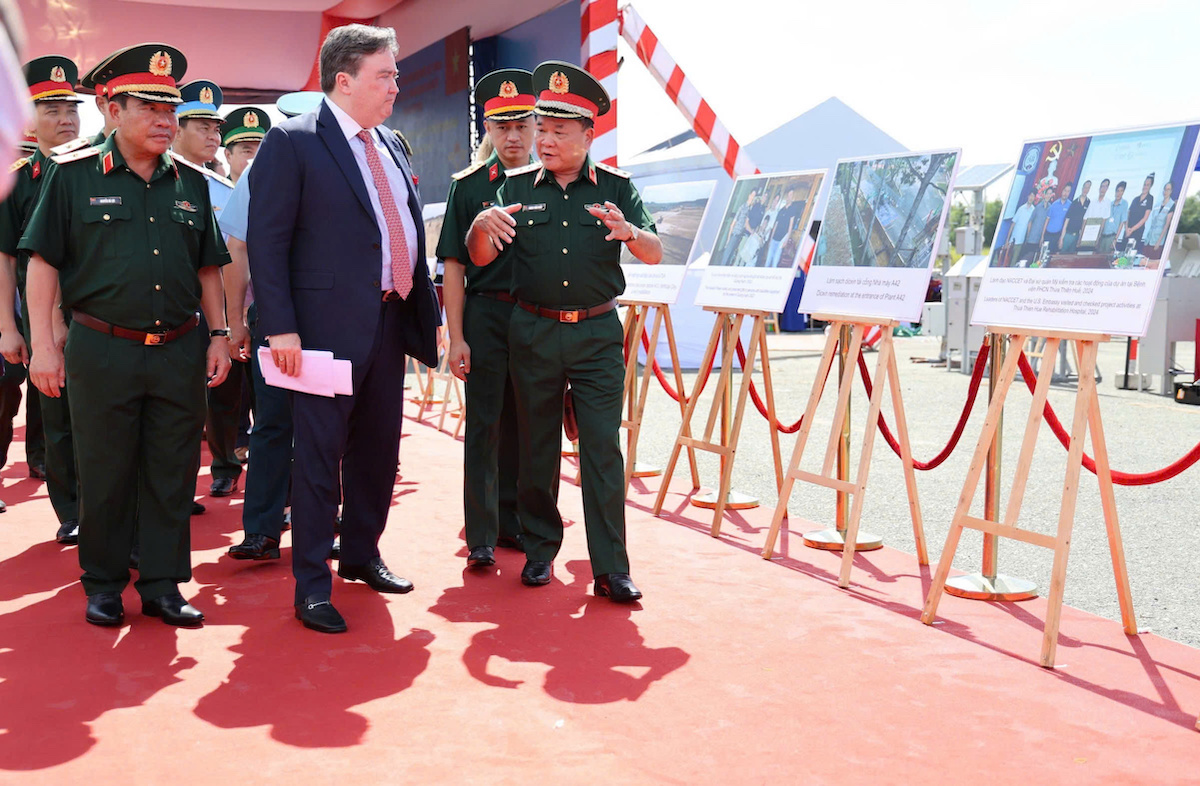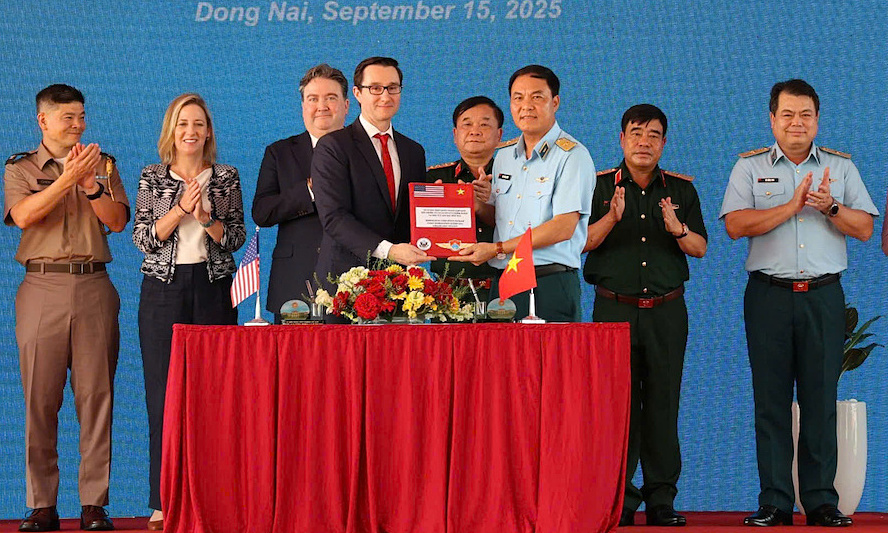On 15/9, the US Embassy handed over certification for 6 hectares of remediated land to the Air Defense - Air Force Service.
 |
Lieutenant General Hoang Xuan Chien introduces the project to US Ambassador to Vietnam Marc Knapper at the event on 15/9. Photo: Phuoc Tuan |
Lieutenant General Hoang Xuan Chien introduces the project to US Ambassador to Vietnam Marc Knapper at the event on 15/9. Photo: Phuoc Tuan
According to the Ministry of National Defense, since December 2019, the Vietnam - US cooperative project has treated almost half of the contaminated land in and around the airbase. The land now meets safety standards and has been returned to the military and Dong Nai province for economic, social, and national defense development.
For the next phase, the project will launch a thermal dioxin treatment system—a key component for successful remediation. The goal is to complete the treatment of all dioxin at the airbase by 2030.
Lieutenant General Hoang Xuan Chien, Deputy Minister of National Defense, described the handover of the 6 hectares of clean land as a significant milestone, affirming the effectiveness of the bilateral cooperation in addressing war legacies.
Bien Hoa airbase was a major US military base and a storage site for Agent Orange, a herbicide used during the war. Between late 1969 and March 1970, 4 spills and leaks released approximately 2,500 liters of Agent White and 25,000 liters of Agent Orange into the environment.
The Bien Hoa dioxin remediation project is a 10-year, two-phase endeavor to treat a total of approximately 500,000 m3 of contaminated soil at a cost of 430 million USD. The first phase, ending in 2025, aims to remediate 150,000 m3 of soil.
 |
US government representatives hand over 6 hectares of remediated land at Bien Hoa airbase during phase one. Photo: Phuoc Tuan |
US government representatives hand over 6 hectares of remediated land at Bien Hoa airbase during phase one. Photo: Phuoc Tuan
On the same day, US Ambassador to Vietnam Marc Knapper signed an agreement for an additional 32 million USD in non-refundable aid to expand a project supporting people with disabilities in provinces heavily affected by Agent Orange. Launched in 2021 in Quang Tri, Gia Lai, Quang Ngai, Dong Nai, Thua Thien Hue, and Da Nang, the program will soon expand to Ca Mau.
Over 3 years, the project has assisted over 32,000 people with disabilities and Agent Orange victims, exceeding 60% of its target. The program provides healthcare, medical services, and employment opportunities.
Phuoc Tuan












